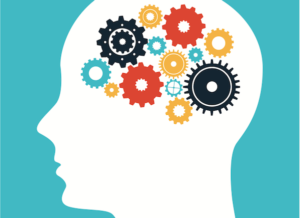Attachment styles play a critical role in shaping our relationships, and influencing how we connect, trust, and communicate with others. Anxious attachment, characterized by a deep-seated need for closeness and an intense fear of abandonment, can lead to a range of emotional challenges and strain in personal connections. In this comprehensive guide, we will delve into the core principles of CBT for anxious attachment, offering practical strategies and insights to help individuals.
Contents
Can CBT Help Anxious Attachment?
 Yes, Cognitive Behavioral Therapy (CBT) can be an effective intervention for individuals dealing with anxious attachment. Anxious attachment is often characterized by a pervasive fear of abandonment, an intense need for reassurance, and a tendency to become overly dependent on others for emotional support. CBT works to address these issues by helping individuals identify and challenge the distorted thoughts and beliefs that contribute to their anxiety and dependence.
Yes, Cognitive Behavioral Therapy (CBT) can be an effective intervention for individuals dealing with anxious attachment. Anxious attachment is often characterized by a pervasive fear of abandonment, an intense need for reassurance, and a tendency to become overly dependent on others for emotional support. CBT works to address these issues by helping individuals identify and challenge the distorted thoughts and beliefs that contribute to their anxiety and dependence.
Through the use of evidence-based techniques, CBT encourages individuals to develop healthier patterns of thinking and behaving in relationships. Over time, these strategies can contribute to a reduction in anxiety and a more secure attachment style, fostering healthier and more fulfilling relationships.
What Techniques Of CBT For Anxious Attachment Are Used?
Cognitive Behavioral Therapy (CBT) employs a range of techniques to help individuals with anxious attachment recognize and alter the thought patterns and behaviors that contribute to their attachment anxiety. Here are some key techniques used in CBT for anxious attachment:
Cognitive Restructuring
- Identifying Distorted Thoughts: Individuals learn to recognize and pinpoint the automatic, negative thoughts that contribute to their attachment anxiety.
- Challenging Irrational Beliefs: Therapists help clients question and challenge these distorted thoughts. And, encouraging a more balanced perspective.
- Replacing Negative Thoughts: Clients are guided to replace irrational beliefs with more realistic and positive ways of thinking.
Mindfulness and Emotional Regulation
- Practicing Mindfulness: Techniques such as deep breathing, meditation, and body scan are used to help clients stay grounded and focused on the present moment.
- Developing Emotional Awareness: Clients learn to identify and understand their emotions. This is crucial for managing intense feelings of anxiety and fear.
- Building Emotional Resilience: Strategies are introduced to help individuals cope with and regulate their emotions effectively. And, reducing their vulnerability to anxiety.
Exposure Therapy
- Gradual Exposure: Clients are gradually exposed to situations that trigger their attachment anxiety, helping them build tolerance and reduce avoidance.
- Developing a Safety Plan: A plan is put in place to ensure that the client feels supported and safe throughout the exposure process.
Behavioral Experiments
- Testing Beliefs in Relationships: Clients are encouraged to engage in experiments that test their beliefs about relationships and attachment, fostering new learning and behavior change.
- Building New Relationship Skills: New and healthier ways of relating to others are practiced and reinforced.
Communication and Social Skills Training
- Improving Communication Skills: Clients learn effective communication strategies to express their needs and boundaries clearly in relationships.
- Enhancing Assertiveness: Training is provided to help individuals become more assertive, reducing passive or aggressive responses in relationships.
Building Self-Compassion
- Fostering a Kind Inner Dialogue: Clients are taught to cultivate a compassionate and supportive internal dialogue, counteracting self-criticism.
- Practicing Self-Compassion Exercises: Specific exercises are used to promote self-compassion and reduce feelings of unworthiness.
Homework Assignments
- Practicing Skills Outside of Therapy: Clients are given homework assignments to practice the skills learned in therapy in real-world settings.
- Reflecting on Progress: Regular reflections on progress help consolidate learning. And ensure the client is moving toward their goals.
By employing these techniques, CBT aims to help individuals with anxious attachment develop a more secure attachment style. And, fostering healthier relationships and reducing anxiety in relational contexts.
What Are The Benefits Of CBT For Anxious Attachment?
 CBT for anxious attachment has been proven to be highly effective in helping individuals develop healthier relationships and reduce anxiety. Here are some of the key benefits of CBT for anxious attachment:
CBT for anxious attachment has been proven to be highly effective in helping individuals develop healthier relationships and reduce anxiety. Here are some of the key benefits of CBT for anxious attachment:
Improved Self-Awareness
- Understanding Attachment Patterns: CBT helps individuals recognize and understand their anxious attachment patterns. And, providing insight into how these patterns affect their relationships.
- Identifying Triggers: Individuals learn to identify specific situations or cues that trigger their attachment anxiety. And, allowing for more proactive management of their responses.
Enhanced Emotional Regulation
- Managing Intense Emotions: CBT provides tools and strategies for managing intense emotions related to attachment anxiety. Also, it helps to prevent overwhelming feelings from sabotaging relationships.
- Building Resilience: As individuals learn to cope with and regulate their emotions more effectively, they build emotional resilience, reducing their vulnerability to anxiety.
Improved Relationship Skills
- Enhancing Communication: CBT helps improve communication skills. Eventually, this ensures that individuals can express their needs and boundaries clearly and effectively.
- Building Trust: As communication improves, trust is strengthened within relationships, providing a more secure foundation for connection.
Reduction in Relationship Anxiety
- Alleviating Attachment Anxiety: By addressing the thought patterns and behaviors that contribute to anxious attachment, CBT helps reduce overall relationship anxiety.
- Promoting Secure Attachment: Over time, these changes can contribute to the development of a more secure attachment style. And, fostering healthier and more satisfying relationships.
Increased Independence and Self-Esteem
- Fostering Healthy Independence: CBT encourages a healthy sense of independence, helping individuals find a balance between connection and autonomy.
- Boosting Self-Esteem: As individuals develop healthier attachment patterns and relationships. Then, they often experience an increase in self-esteem and self-worth.
Long-Term Relationship Stability
- Building Lasting Change: The skills and strategies learned in CBT provide lasting change. And, contributing to long-term relationship stability and satisfaction.
- Preventing Relationship Breakdown: By reducing anxious attachment behaviors and fostering secure attachment, CBT helps prevent the relationship breakdown and distress that can result from intense attachment anxiety.
Enhancing Overall Well-Being
- Improving Mental Health: The reduction in anxiety and improvement in relationships contribute to an overall enhancement in mental health and well-being.
- Promoting Life Satisfaction: As relationships stabilize and become more fulfilling, individuals often experience an increase in life satisfaction and happiness.
Therefore, CBT for anxious attachment offers a comprehensive approach. It also provides individuals with the tools they need to understand their attachment style, regulate their emotions, improve their relationships, and lead happier, more fulfilled lives.
How To Find The Right Therapist Near Me?
 Finding the right therapist is a crucial step in your mental health journey. So, here’s a guide to help you find the right therapist near you:
Finding the right therapist is a crucial step in your mental health journey. So, here’s a guide to help you find the right therapist near you:
1. Define Your Goals and Preferences
- Identify Your Needs: What specific issues do you want to address? Do you have a particular condition like anxiety, depression, or attachment issues?
- Consider Therapist Characteristics: Do you have a preference for a therapist of a particular gender, age, or cultural background?
2. Research Potential Therapists
- Ask for Recommendations: Talk to friends, family, or healthcare professionals who can provide trusted recommendations.
- Use Online Directories: Websites like MantraCare, GoodTherapy, or TherapyDen allow you to search for therapists based on location, specialty, and insurance.
- Check Credentials: Ensure that the therapist is licensed and has experience in the areas that align with your goals.
3. Verify Insurance and Pricing
- Check Insurance Coverage: Contact your insurance provider to get a list of in-network therapists, and verify what your plan covers.
- Inquire About Costs: If you’re not using insurance, ask about the therapist’s fees. And if they offer sliding scale prices based on income.
4. Reach Out and Ask Questions
- Make Contact: Call or email potential therapists to express your interest and ask any preliminary questions.
- Discuss Logistics: Talk about availability, session length, and any other logistical concerns.
5. Evaluate After the First Few Sessions
- Don’t Settle: If something doesn’t feel right, it’s okay to consider other options. Finding the right therapist might take a few tries.
- Explore Online Therapy: If you’re having trouble finding a local therapist, or prefer the convenience of online sessions, consider reputable online therapy platforms.
Remember, finding the right therapist is a personal journey. And it’s important to prioritize your comfort and the sense of connection you feel.
Conclusion
In conclusion, navigating the complexities of anxious attachment through Cognitive Behavioral Therapy equips individuals with invaluable tools and strategies. By diligently engaging with CBT’s proven techniques, from cognitive restructuring and mindfulness to emotional regulation and enhanced communication skills, individuals break free from the chains of attachment anxiety. Thus, cultivating resilience, self-awareness, and profound relationship stability.
Hence, this comprehensive journey alleviates the immediate stressors associated with anxious attachment. And, also lays a robust foundation for long-term emotional well-being and fulfilling connections. If you are experiencing anxiety-related issues, Online Anxiety Counseling in India at TherapyMantra can help: Book a trial Online therapy session


